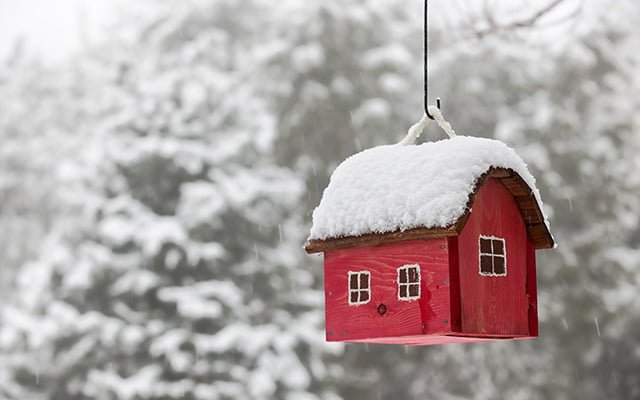
BC has already had its taste of winter weather at the onset of November and there is no doubt that there is more to come. The early start is a blessing in disguise however, as it provides a tangible reminder to homeowners that the time to act is now. Once again, Park Insurance is here to guide you in the right direction towards a home protection plan that will give you peace of mind until the bloom of spring returns. The following focuses on your home’s exterior, and its impact within.
4 Tips to Protecting Your Home’s Interior (from the Exterior) Through the Winter Season
1. Take the Wind Out of Your Ails
Coastal British Columbia experiences winter weather differently from our more eastern counterparts. Wind is a major problem that rears its head at the onset of the season, and again at the tail end. Windstorms batter Greater Vancouver homes and cause all sorts of liability and claims woes without proper protection in place. Thankfully, we have dedicated an entire article to this BC home exterior ailment. The checklist includes the following:
- Trim and secure trees and foliage near your home and power lines
- Inspect and repair your roof (gutters, downspouts, shingles, etc.).
- Stormproof your windows.
- Secure and/or remove patio furniture, outdoor decor, and more (lawn toys, etc.).
View our full article on how to protect your home from wind damage in BC.
2. Raise the Roof from the Threat of Snow
Your roof takes the brunt of snowfall, and will be the main barrier intent on keeping your home’s interior safe. Luckily, the same inspection and repair performed on your roof (including gutters, downspouts, and shingles) for wind protection will serve you well for snowfall too. That being said, you want to arm yourself with tools to get you through the winter season, tools that will be invaluable in keeping snow off of your roof.
Some homeowners opt for heat cables, however these do not come without complication as they can catch and collect windblown debris. In addition, they are often an expensive and ineffective gimmick. Instead, good old fashioned manual labour will do the job. That effort can be made easier with a roof rake and a sturdy ladder. For a roof rake to be effective, the snow accumulation must be light, so be sure to be diligent and make it a part of your weekly home exterior chores (where applicable) otherwise you will need to get up on your roof with a shovel which opens you up to potential for injury. If accumulation gets heavy, it’s probably better to bring in a professional.
3. Drain Your Sprinklers and Remove/Store Lawn and Garden Hoses
Attend to your home’s exterior irrigation systems before freezing temperatures arrive. Frozen irrigation lines can lead to cracked pipes and fractured sprinkler heads. How do you drain a standard sprinkler system? Follow these step by step instructions:
- Shut off the main water valve
- Turn off the automatic controller
- Open the drain valves and expel water
- Remove above-ground sprinkler heads (where applicable), shake out water, and secure them back in place
If all of the above sounds greek, then you can find a residential irrigation expert near you by performing an online search. A small investment will go a long way in keeping your property safe from the impending freeze.
One thing you can do with ease, is to remove all garden hoses from outdoor faucets. Far too many homeowners leave their hoses attached all year. This can cause water to back up in the faucets and into your plumbing, just inside the walls of your home. When freezing temperatures arrive, the backed-up water freezes, expands, and cracks the faucet or pipes. You know what happens next. Prevent this scenario from unfolding by turning off exterior water valves and draining your garden hoses. Once done, roll them up and store them in a safe place for the season.
4. Hunt for Air Leaks (and seal them)
Your winter preparedness plan (items #1-2 above) will also catch the potential for water leaks in the roof, but there is another type of leak you need to be mindful of.
Air leaks (more common in the winds of winter) are not just an inconvenience to comfort and heating expenditure. They can cause literal damage, resulting in condensation and mold that can degrade your home. In addition, small pests seeking solace from the winter weather will gain access to home through even the tiniest points of entry. An airtight home is a protected one, and so you will want to hunt down air leaks right away. How do you inspect for air leaks? Follow these instructions:
- On an especially cold or windy day, perform a hand test at the edges of all exterior doors, windows, vents, and electrical outlets.
- Use a lit candle to inspect zones that may have air leaks, including electrical outlets, light fixtures, baseboards, and cable/phone jacks. If the candle flame flickers, you may have a leak.
- Invest in a portable air leak detector (available at your local retailer for around $60+) and perform the inspection.
Attend to any leaks that you find, either with a DIY caulking gun or by bringing in a residential wall cladding and repair expert. The investment will pale in comparison to the money spent on excessive (caused by the leaks) heating expenditure alone.
Of course, there is one more home protection measure worth mentioning, and that is to make sure that you have the appropriate homeowners insurance coverage to carry you safely through the season (and beyond). Contact an independent insurance broker for an assessment of your current policy before winter strikes again.
